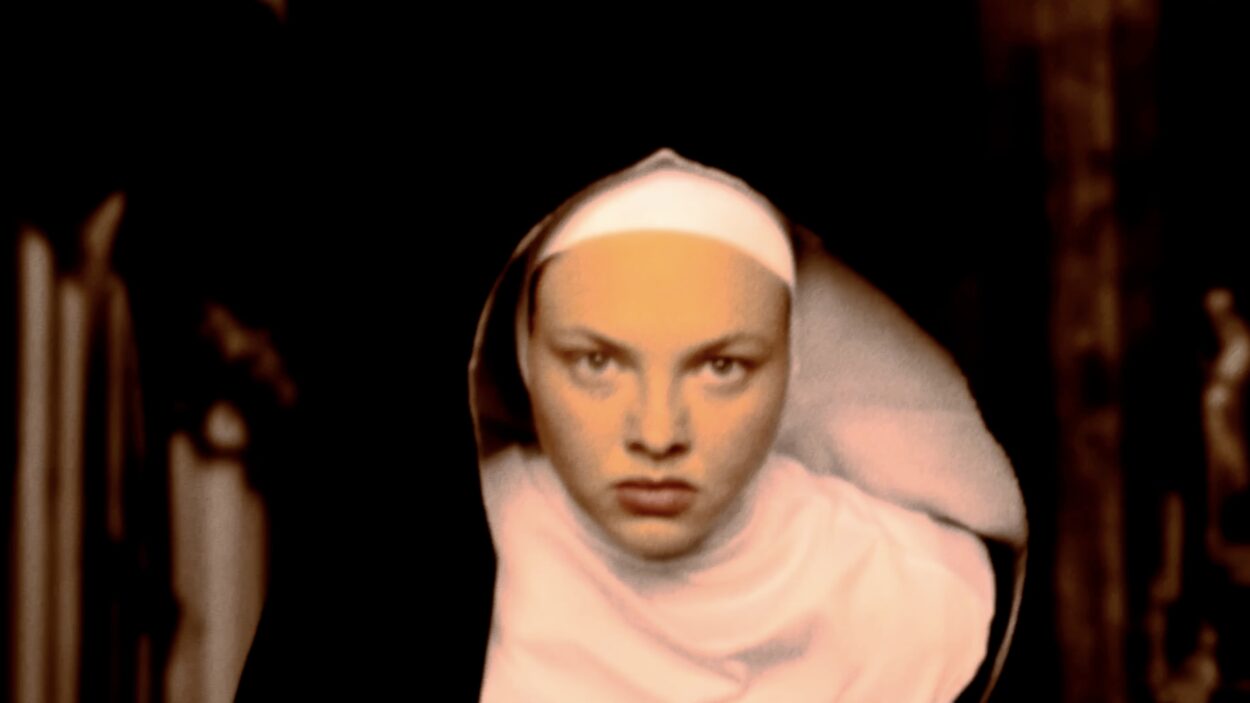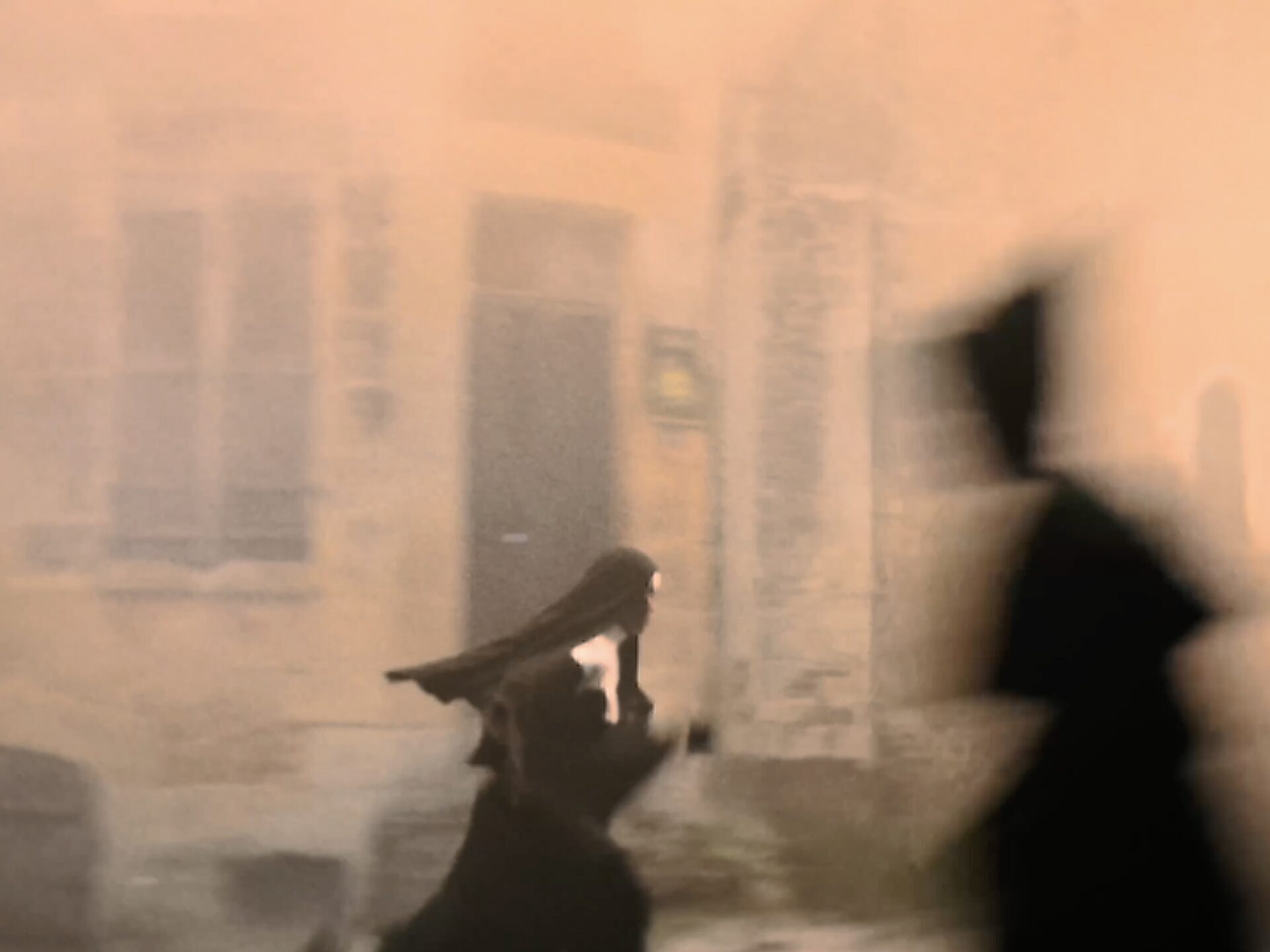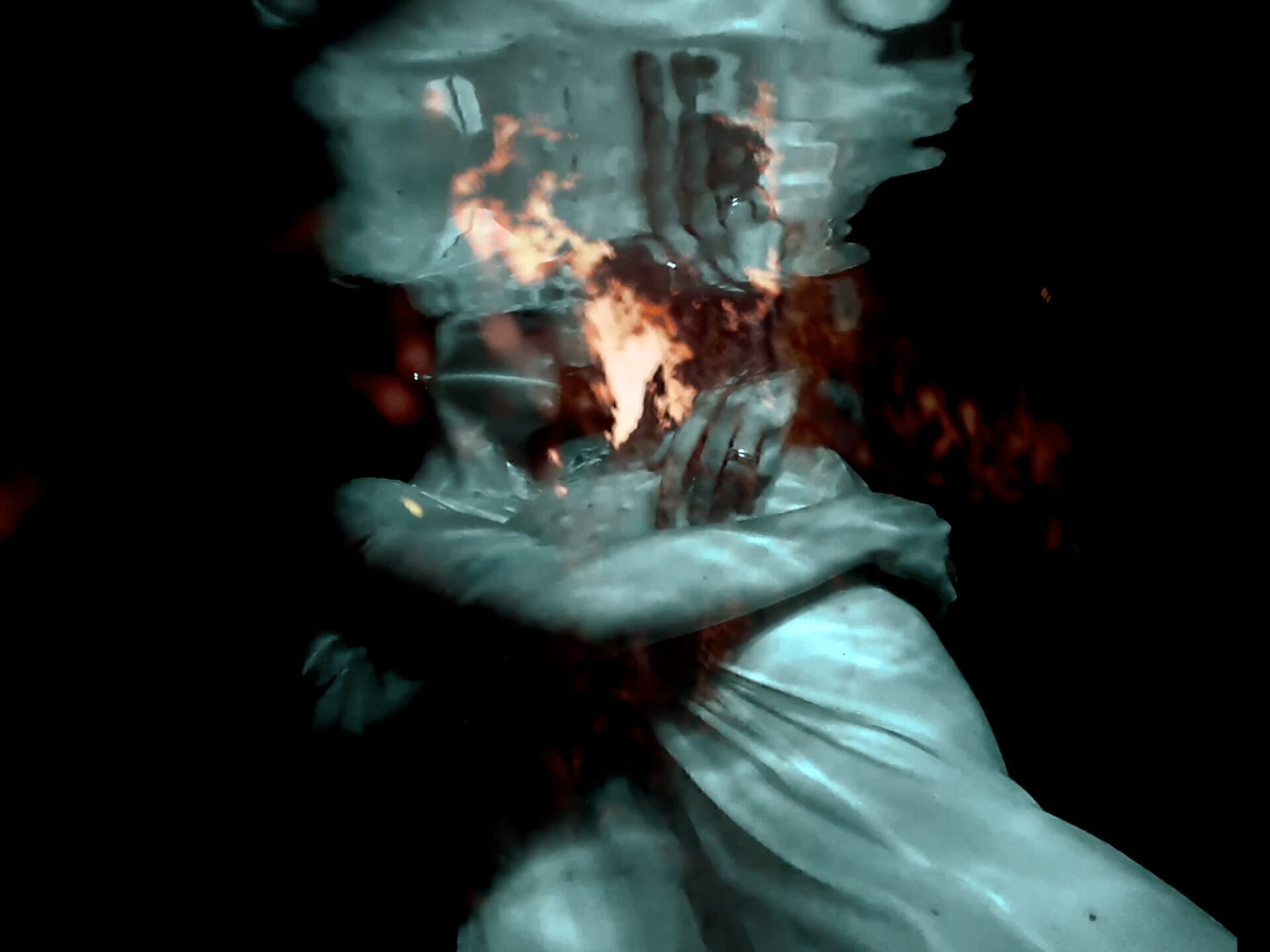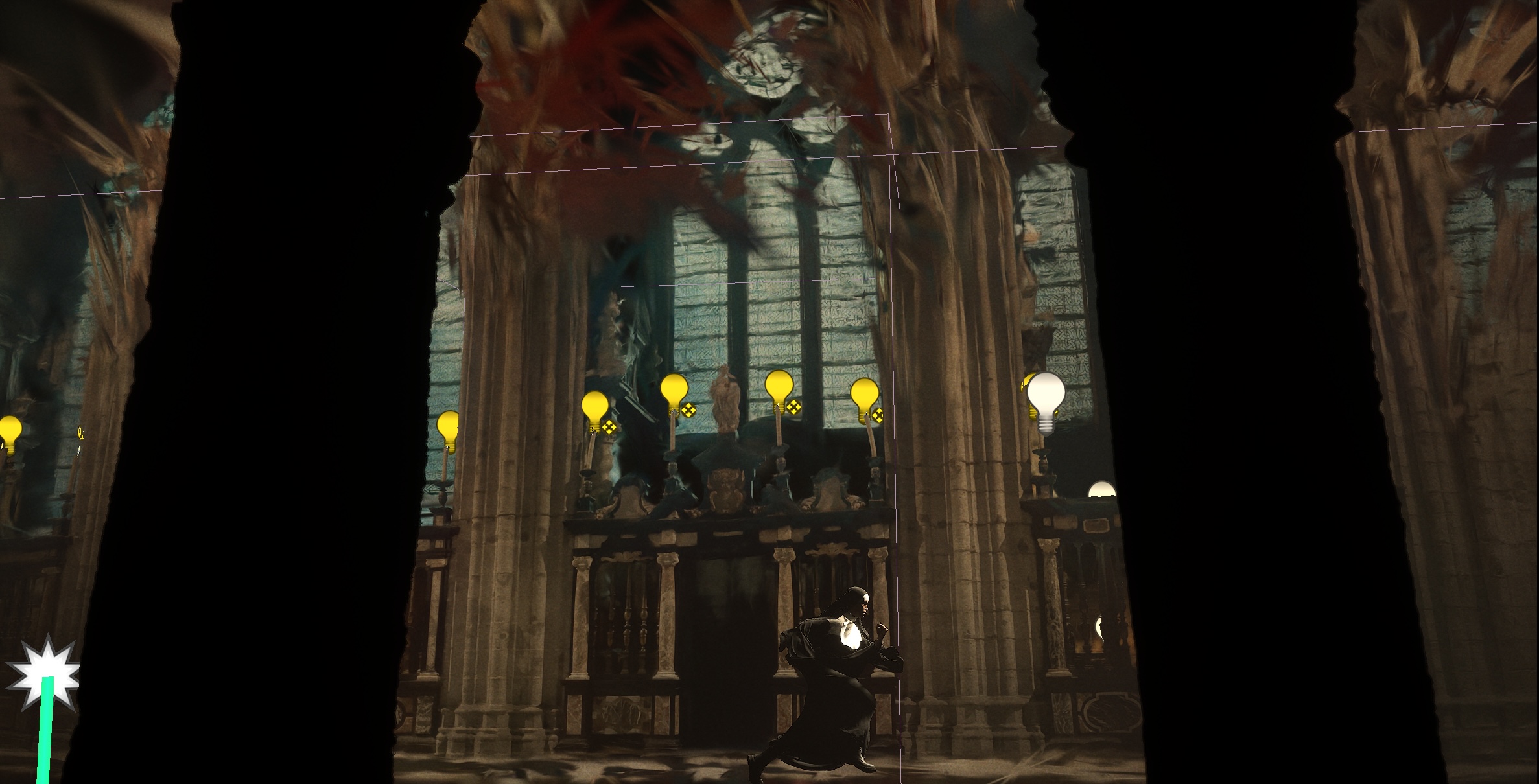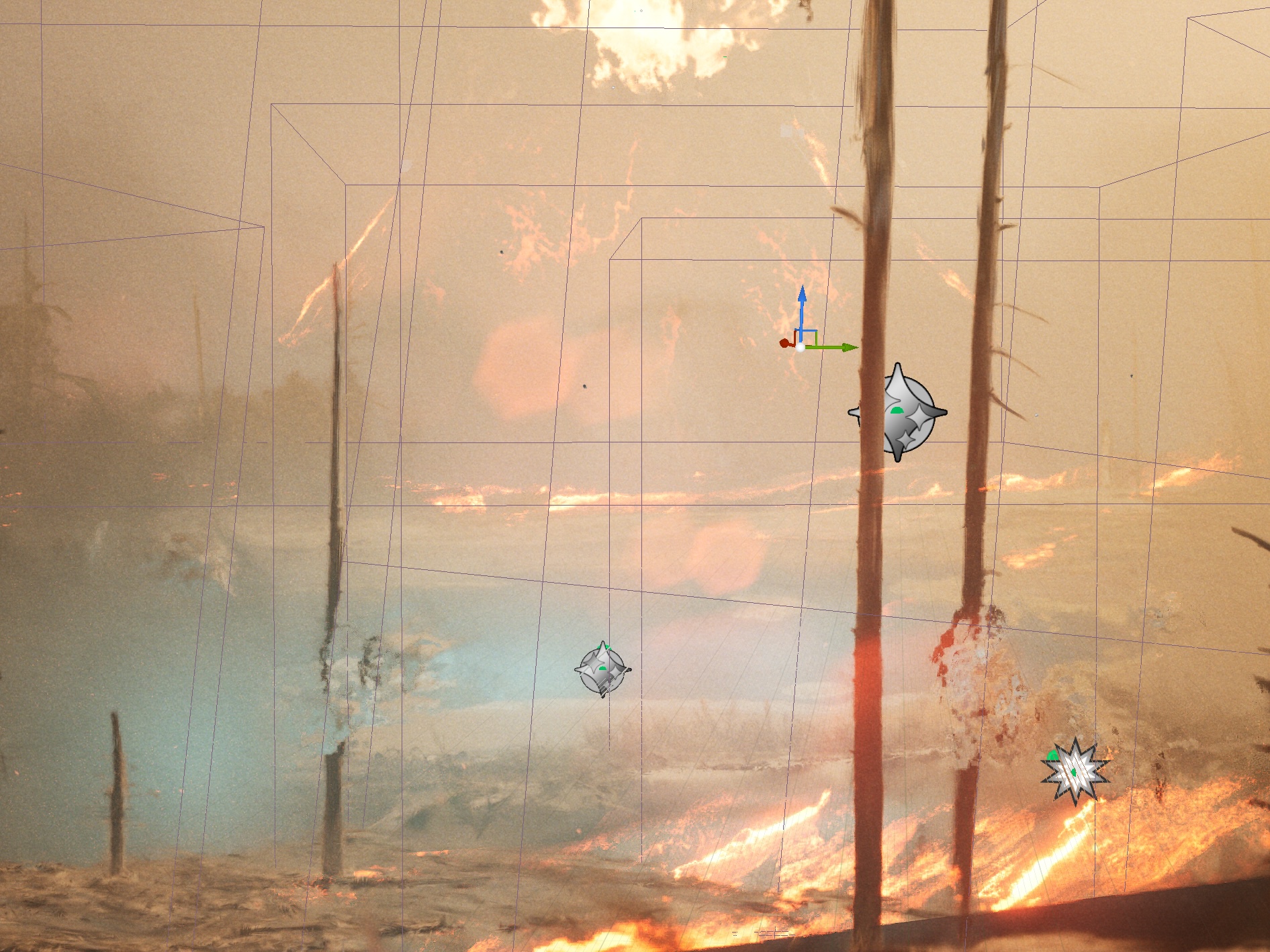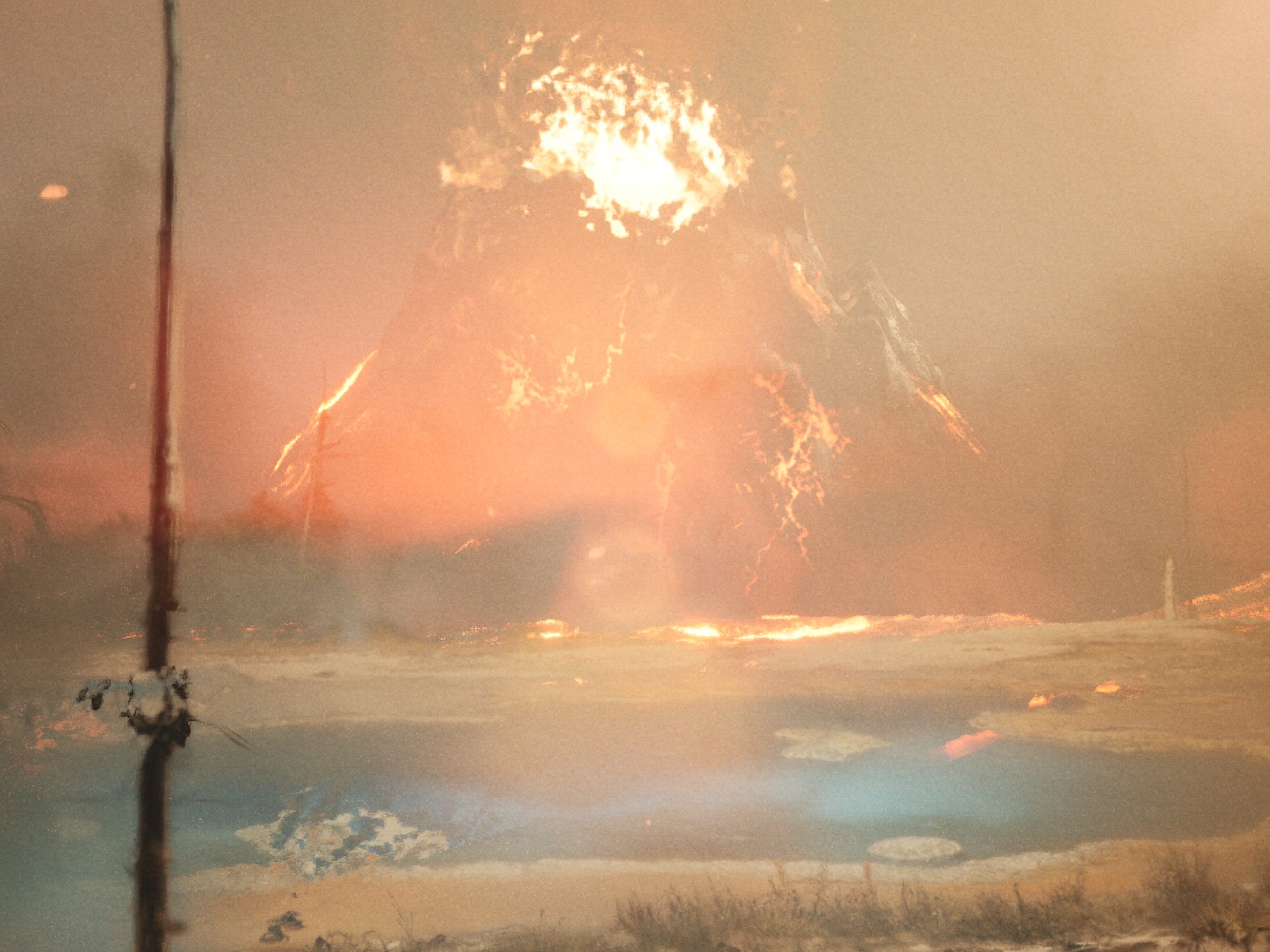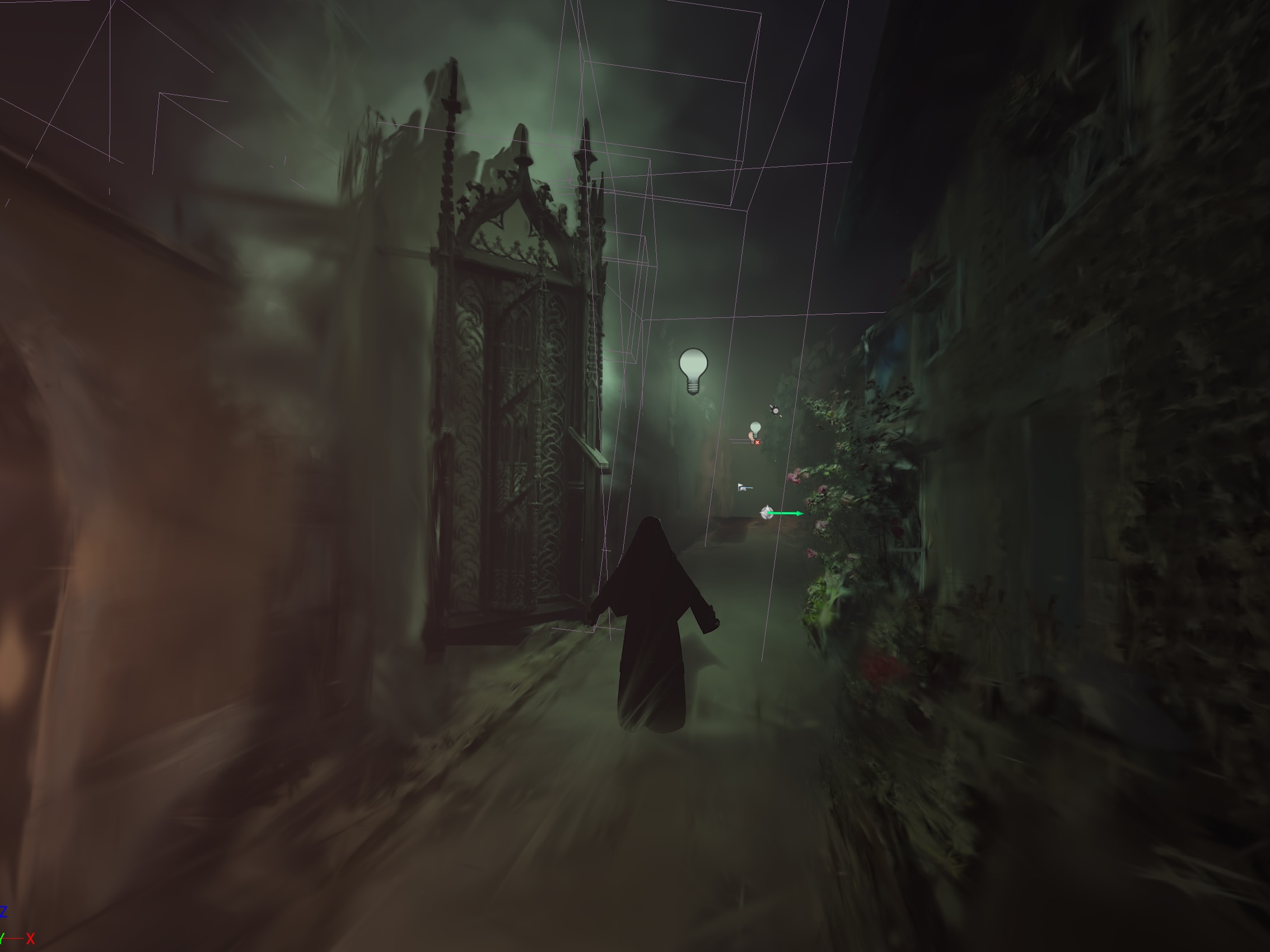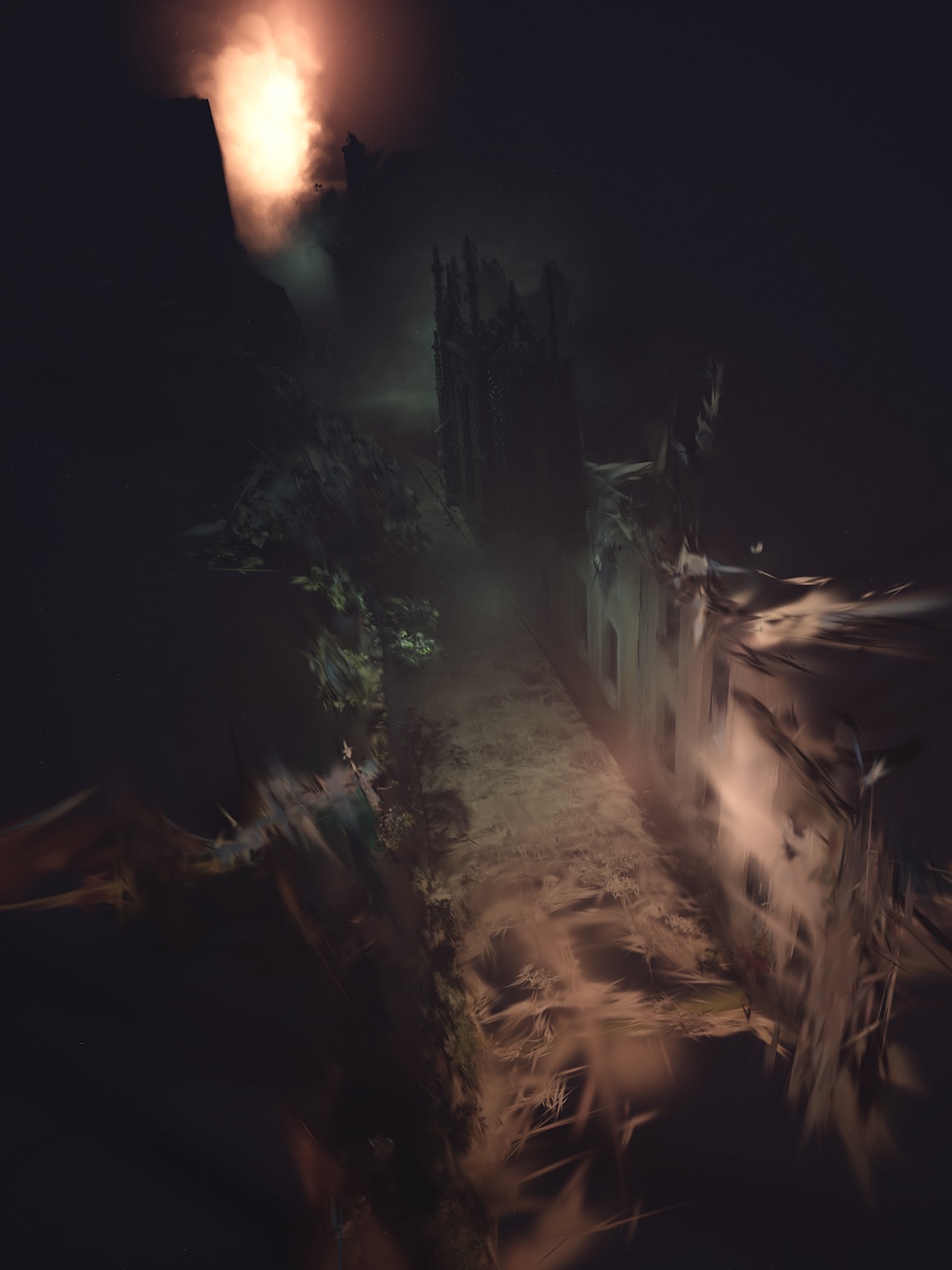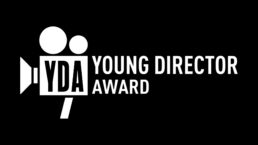Hell feels like it’s drenched in mystery – and emotion. Can you walk me through the first image or feeling that sparked it?
The story spilled out from my experiences of romance in a time of grief. I noticed how death, rather than destroying desire, often clarified it — transforming it into something crazy urgent. The image of the nun emerged from this feeling: her simultaneous journey towards the one she loves but also the fiery mouth of the volcano, captured that intensity of yearning in the face of death.
The story unfolds without dialogue, yet it’s emotionally charged. How do you translate an inner life, like the nun’s, without words?
Working closely with musician Julian Tran, an original score was developed to meet the ambitions of the storyboard. Through the melding of performance, music and environmental storytelling we found we could communicate a more visceral language through the silent protagonist. Rather than using verbal exposition to explain what the nun feels, we wanted the audience to know her with immediacy and lock into that emotional ride.
I think strong wordless narratives seem to do this more naturally than other kinds of films because the frame of language and plot device falls away. You’re in the moment with the character — you’re not being told why you should feel something, you simply collapse into sound and image. In HELL this gave us a lot of license to push a kind of expressionism in every frame because every corner of the screen had to drip with intensity. For the story to function without words, the audience needs tofeel the world as the nun does: they actually have to experience a place of apocalypse, of romance and hell.
There’s a strong undercurrent of desire, secrecy, and maybe transgression in Hell. Were you looking to explore the sacred versus the forbidden?
The nun risks her life and, according to certain christian sects, her eternal soul to be with the one she loves. Her journey became a powerful symbol to me — seeing someone choose faith not in the eternal, but in the here and now. Especially if the here and now is considered forbidden or even sinful.
As an audience we see her love as that much more devoted and true because it is transgressive. In this way, the nun’s abandonment of the sacred serves as a helpful way to frame her character’s intensity of feeling. It is also perhaps the reason I seem to return to religious iconography in my work.
You blend handcrafted sculpture, computer-generated animation, and live action. Where in that mix do you feel most alive creatively?
My film process essentially emerged from indecision. I grew up wanting to direct and work with actors but I also loved the more solitary art-making of sculpture and animation. Over the last few years I’ve crafted a process from these seemingly opposing impulses, and it’s in that heady mixture where I guess I feel most engaged.
I love figuring out how different mediums might mesh together — messing with their formal elements to make something that feels totally new. I like feeling a bit witchy, engaging in a weird kind of alchemy, chasing a feeling I don’t think traditional mediums can provide.
In Hell, your visuals feel both tactile and dreamlike. How do you decide which elements remain physically built and which are born in the digital space?
All the visuals of HELL are physically built, either as already-existent architecture or hand-made sculpture, which are then scanned using photogrammetry and repurposed in virtual space. The result is a film whose every object and texture was captured rather than digitally created, and where the physicality of the animated environment hopefully feels as true as the performances within it.
By utilising these processes, HELL aims to demonstrate how much more we respond to stories constructed from the world around us rather than ones drawn entirely from a virtual void: much like the protagonist of this film decides, perhaps only the things we can reach out and touch are worthy of our belief.
The nun character feels layered, almost like she’s caught between realms. How much of her story is fixed in your mind, and how much is open to interpretation?
The only thing that feels fixed is her love. Whether this story is myth or reality, whether she lives or dies, all that feels clear to me is that her love goes really really really hard.
If you weren’t making films, where would you be happiest creating?
I’d be designing bath houses! I see a lot of story in those structures.
In your film New Game+, you built handcrafted elements in a game engine, merging the tangible with the virtual. Did that project change the way you approached Hell?
For sure, specifically its ending. New Game+ follows a video game avatar’s journey through a series of surreal levels, eventually leading him into the bedroom of the player who has been controlling him. In this moment we see the avatar transition from a solely digital existence into a
partially real one. The film ends in this material mystery, where it’s not entirely clear in which realm the avatar (or the player) now belongs.
The narrative power of those final images convinced me that the digital and physical should coexist
in the same frame. Seeing those worlds unified heightened a connection with the events happening on screen. It pushed me to explore a story that begins within that blend of mediums. I think HELL was made according to that blueprint.
What’s the one image or message from Hell that you hope stays with people long after they’ve seen it?
Love Means Taking Action xxx
If Hell were a place, would you want to visit?
Yes, I see it as a hot spring. I’d bathe there till my skin wrinkles over.
Flip book of WIP animations for Hell
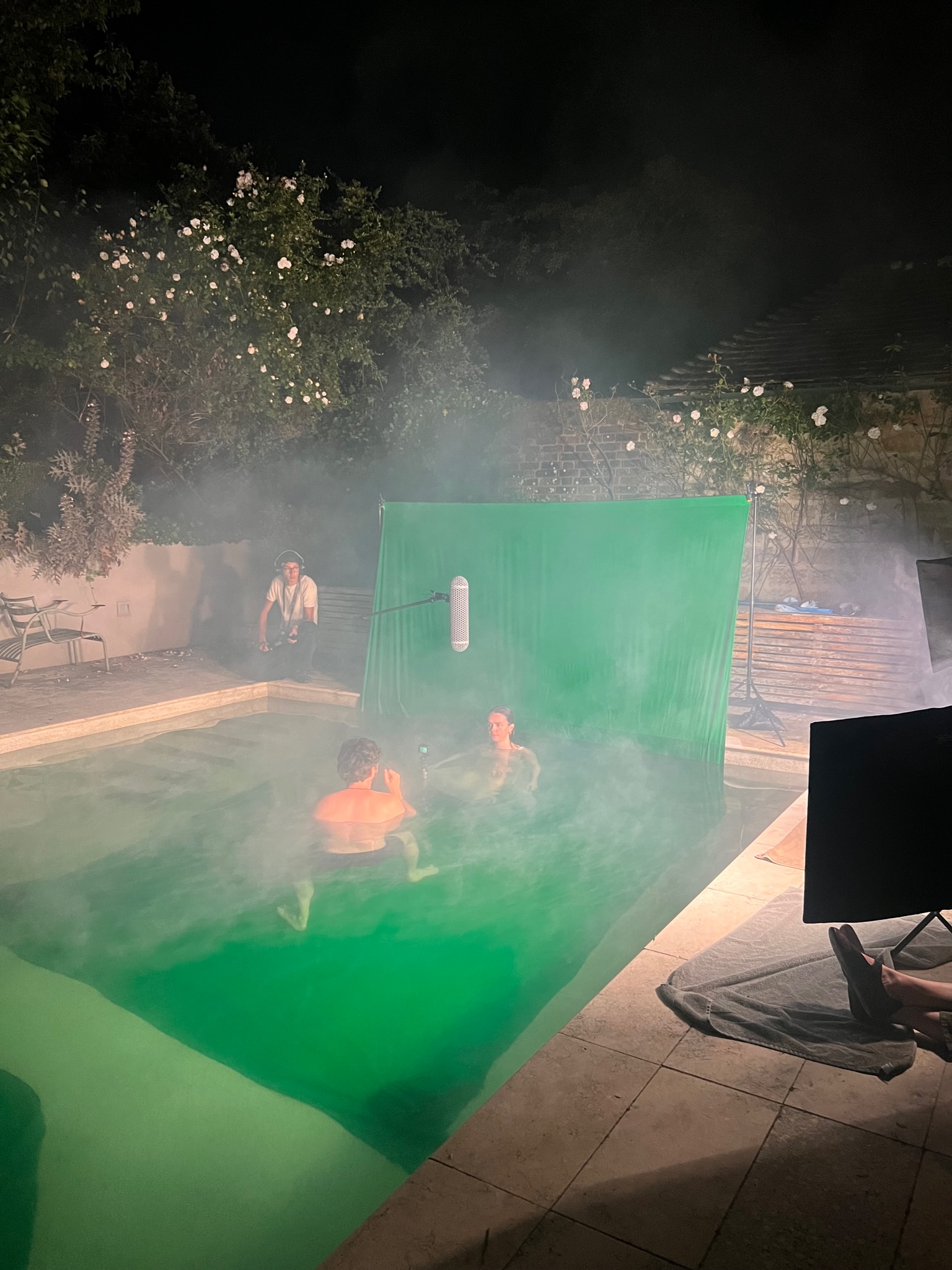



BTS for Hell
